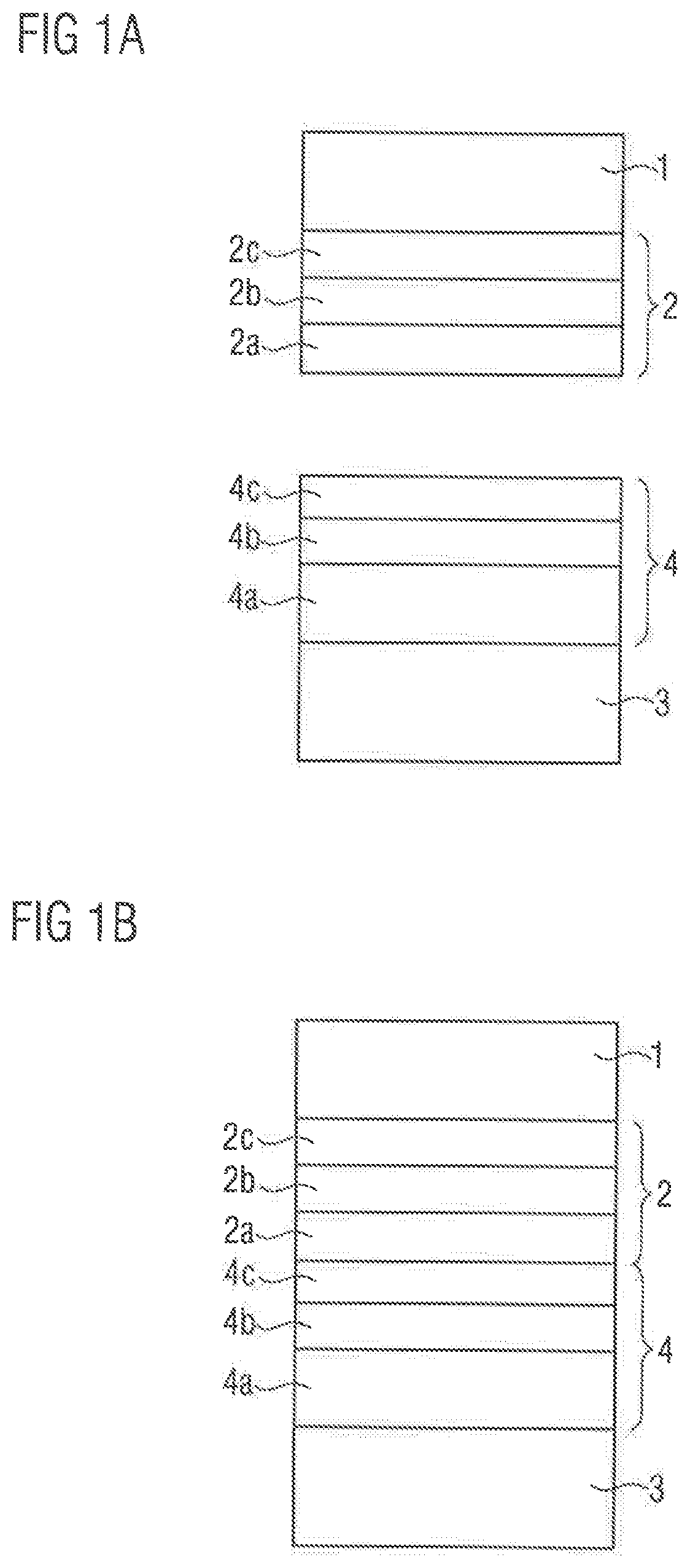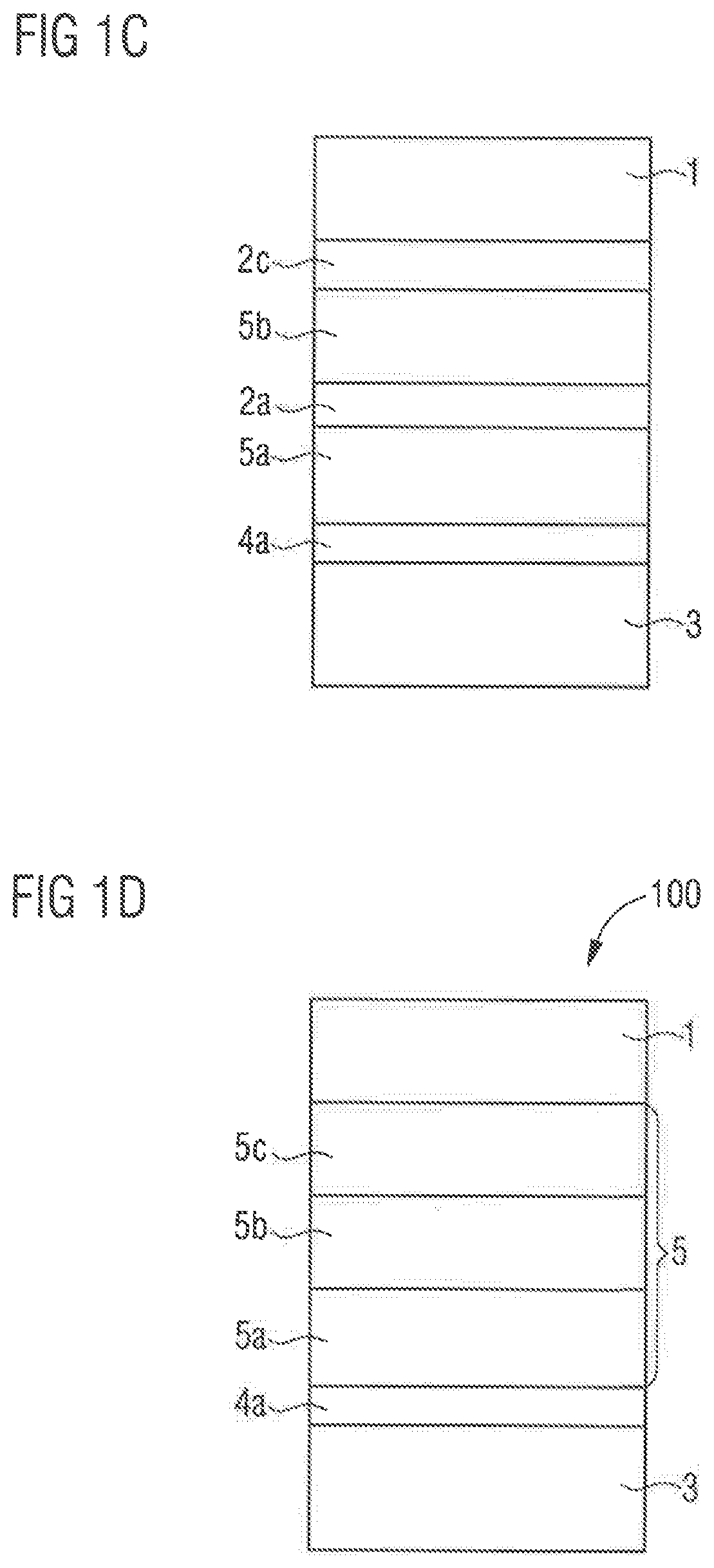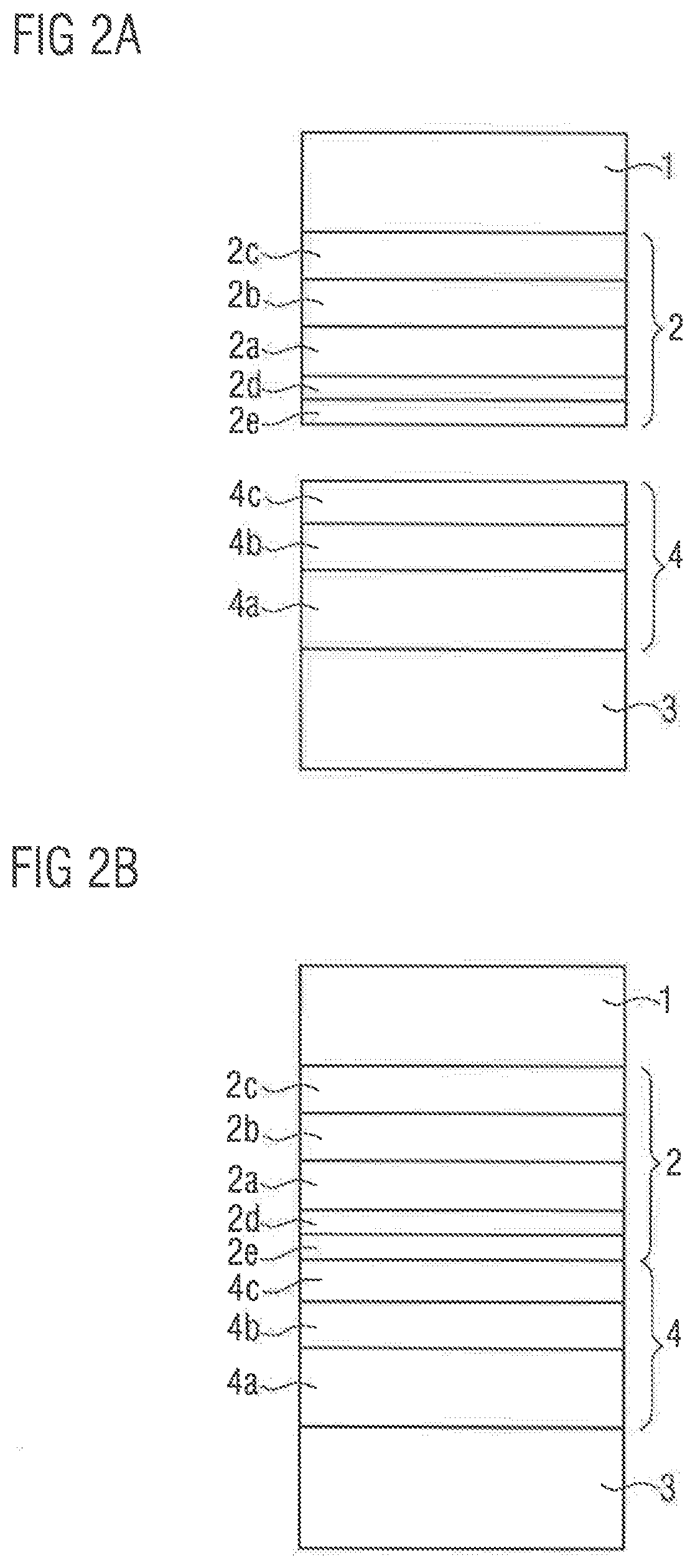Method for Fastening a Semiconductor Chip on a Substrate, and Electronic Component
a technology of semiconductor chips and electronic components, applied in semiconductor devices, semiconductor/solid-state device details, electrical devices, etc., can solve the problems of initiation of cracks, significant thermally induced mechanical loads, carrier materials, etc., and achieve the effects of less brittleness, less brittleness, and more resilient mechanical properties
- Summary
- Abstract
- Description
- Claims
- Application Information
AI Technical Summary
Benefits of technology
Problems solved by technology
Method used
Image
Examples
Embodiment Construction
[0076]FIG. 1A shows a semiconductor chip 1 above which a solder metal layer sequence 2 is arranged. The solder metal layer sequence comprises a first metallic layer 2a, a barrier layer 2b arranged above the first metallic layer 2a and a second metallic layer 2c arranged above the barrier layer 2b. The first metallic layer 2a comprises or consists of an indium-tin alloy of the formula InxSn1−x with 0.04≤x≤0.2. The barrier layer 2b consists of nickel, titanium or platinum and the second metallic layer 2c consists of gold. The amount of substance of the gold of the second metallic layer 2c is greater than the amount of substance of the tin of the first metallic layer 2a. The first metallic layer 2a has a layer thickness between 750 nm and 3 μm inclusive, the barrier layer has a layer thickness between 5 nm and 200 nm inclusive and the second metallic layer 2c has a layer thickness between 500 nm and 2 μm inclusive. Further, FIG. 1A shows a substrate 3 above which a metallization layer ...
PUM
| Property | Measurement | Unit |
|---|---|---|
| thickness | aaaaa | aaaaa |
| thickness | aaaaa | aaaaa |
| thickness | aaaaa | aaaaa |
Abstract
Description
Claims
Application Information
 Login to View More
Login to View More - R&D
- Intellectual Property
- Life Sciences
- Materials
- Tech Scout
- Unparalleled Data Quality
- Higher Quality Content
- 60% Fewer Hallucinations
Browse by: Latest US Patents, China's latest patents, Technical Efficacy Thesaurus, Application Domain, Technology Topic, Popular Technical Reports.
© 2025 PatSnap. All rights reserved.Legal|Privacy policy|Modern Slavery Act Transparency Statement|Sitemap|About US| Contact US: help@patsnap.com



